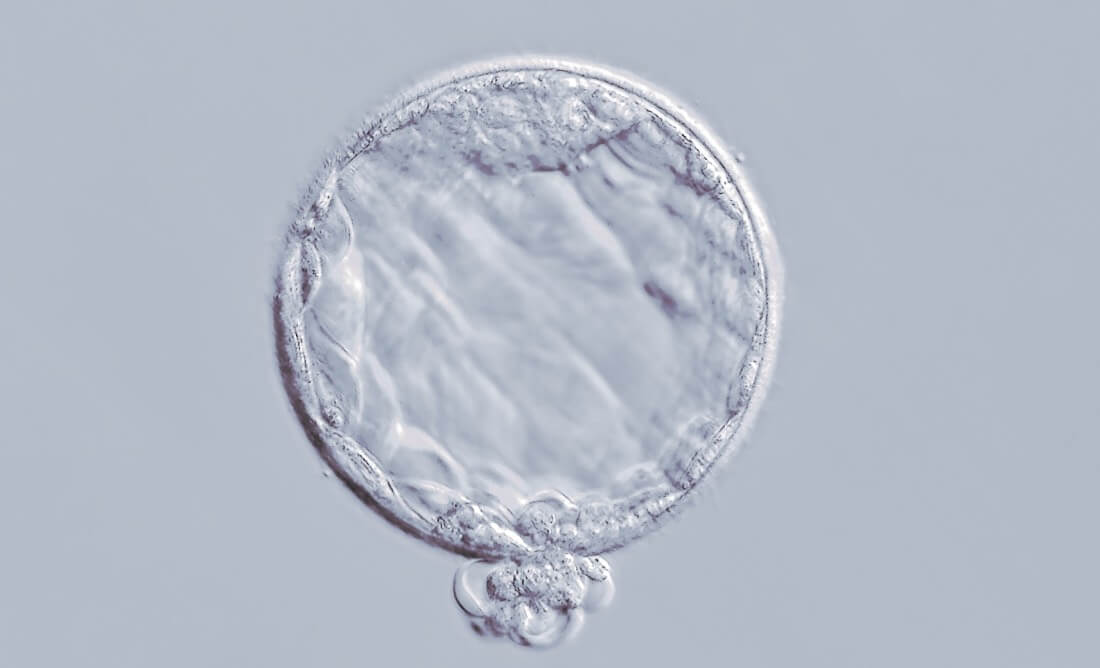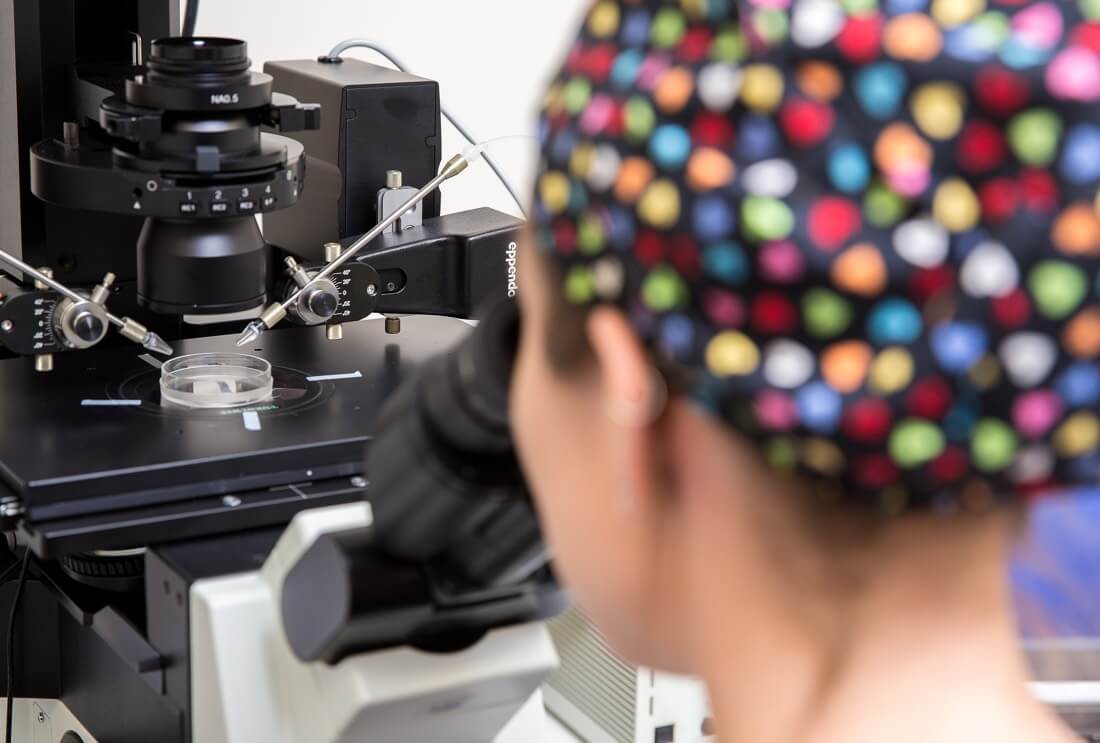Embryo transfer
What is an IVF embryo transfer?
In vitro fertilisation (IVF) is an assisted reproductive technology (ART) used to fertilise an egg and develop an embryo outside the body. Around 5 to 6 days after your egg collection, the fertility specialist will transfer your embryo into your uterus. The goal is for the embryo to implant in the lining of the uterus.
As mentioned, an embryo transfer is quick and usually painless, so you don’t need an anaesthetic. We insert a catheter through the cervix - similar to having a pap smear. This allows us to carefully place the embryo into your uterus.
When an embryo has been placed in your uterus, there is no guarantee it will implant. You will need to wait about two weeks before a blood test can determine if you are pregnant.
"Normally, we only place one embryo at a time. We select the strongest, most viable embryo to transfer. We know that transferring more embryos at a time, does not necessarily increase your chances of pregnancy. It only increases your risk of a multiple pregnancy. In this case, less is more."
Frozen embryo transfer (FET)
It is possible to cryopreserve, or freeze, an embryo for later use.
Frozen embryo transfer (FET) is when we thaw a frozen embryo to transfer into your uterus. The embryo can be your own from a previous IVF treatment, or it can be from donors.
Before and after IVF embryo transfer
Before embryo transfer, you will go through the initial steps of IVF treatment. This includes hormone injections and the collection of sperm and eggs.
After the transfer, you may feel slight discomfort similar to that after a pap smear. After a few days, you can have intercourse and work as usual. Gentle exercise is recommended. Moving around will not reduce your chances of falling pregnant after the procedure.
To learn more about the IVF steps that come before and after embryo transfer, visit the IVF process page.
Pregnancy test
Approximately two weeks after the transfer, you will have a blood test to see if the embryo has implanted.
If your IVF cycle was successful, seen with a positive pregnancy test, you are considered around 4 weeks pregnant. At this point, you will be offered pregnancy tracking.
If not, we will discuss the next course of action with you and we will be there to support you. If you have an embryo in storage, you are able to have a frozen embryo transfer cycle. Or you may need another IVF cycle to collect more eggs. Either way, the next step may be another discussion with your doctor.
Embryoscope
Our fertility clinic sometimes uses an embryoscope to assess your embryos. This is an alternate method to culture embryos.
The embryoscope creates a time-lapse view of an undisturbed embryo. In other words, it enables us to carefully monitor your embryos and helps reduce the exposure of your embryos to slight stresses, otherwise experienced in normal IVF.
"By utilising the embryoscope for culture we are often able to better identify those embryos most likely to lead to a successful pregnancy"
Embryo grading
Before we transfer an embryo from the lab dish to the woman’s uterus, we grade it. That means we evaluate its overall development and quality.
We grade eggs and embryos at different stages throughout the treatment cycle:
Egg retrieval stage
Retrieved eggs (oocytes) destined for ICSI are checked for maturity. They need to be mature for fertilisation to occur.Fresh embryo stage
Once the egg is fertilised, it’s called an embryo. We check for fertilisation and as the embryo develops it is assessed further for appropriate cell division.Blastocyst stage
After five or six days, the embryo reaches the blastocyst stage. This is an important stage in the development of an embryo. We evaluate each blastocyst to assess the uniformity of cell types and the extent of blastocoele cavity expansion.Sperm grading
It is important we also assess the health of the sperm. After all, a woman’s eggs can be completely healthy, but with no viable sperm, no pregnancy will occur.
We can assess your sperm through a semen analysis. This test looks at sperm count, motility, and more. If your ejaculate has a zero sperm count, we can do other tests depending on your medical history. For starters, we might be able to extract sperm directly from your testicles using TESE or TESA procedures.
Key points
Embryo transfer is part of IVF fertility treatment.
We only transfer one embryo at a time, except in very special circumstances.
You may consider using a donor embryo.
Donor eggs, donor sperm, and donor embryos
It is an option to use donor eggs, sperm or embryos. This can be a way to get pregnant if you are a same-sex couple, single or if you can’t conceive using your own eggs or sperm.
When you use a donor embryo, we ensure the biological parents are carefully screened for medical, infectious and genetic conditions.
"If a couple has frozen their spare embryos and no longer need them, they may choose to donate them. This can give other couples a chance to build a family of their own. An embryo from another couple is an amazing, altruistic gift"
Blastocyst-stage transfer
An embryo can be transferred at varying stages.
Embryos that reach the blastocyst stage are more likely to be viable and may have a better chance of implantation.
Therefore, we endeavour to transfer only blastocyst-stage embryos.
"Our clinic strives to use day 5 (blastocyst) transfer. Our data demonstrate a higher success rate with blastocysts compared to transferring day 3 (early cleavage) embryos."
Useful links
IVF
When it's difficult to fall pregnant, our Perth fertility specialists may be able to help. If you have been trying to fall pregnant for a long time without success, IVF might be the answer for you.
ICSI
Fertility preservation
Medical fertility preservation can be undertaken before cancer treatment or before a vasectomy. Our Perth fertility specialists can also advise you how to freeze your eggs or sperm for non-medical reasons.




















